
KINGSLEY HOLGATE'S AFRIKA ODYSSEY EXPEDITION


With 15 African Parks-managed wildlife areas done and dusted, the sturdy expedition Defender 130s haven’t missed a beat. Moyo (Swahili for ‘heart’) and Isibindi (isiZulu for ‘courage’) have each clocked up 40,000km on this Afrika Odyssey expedition, tackling sand tracks, mud tracks, goat tracks and no tracks, ferry crossings, remote border posts in areas where few overlanders venture, torrential rain and record floods in the DRC. Now, it’s onwards to Odzala-Kokoua National Park in Congo-Brazzaville.
The humanitarian work in communities bordering these magnificent parks has made this adventure even more worthwhile: 23,000 moms and children are now safe from malaria; eye tests and 1,800 reading glasses have been distributed to mostly elderly people, and thousands of children have added fun and laughter through the expedition’s educational Wildlife Art campaign.
Ahead lies Chapter 3 of this quest to connect all 22 African Parks-managed national parks (20 million hectares under conservation across 12 countries) and uncover stories of hope for Africa’s wildlife, wild spaces and communities. We aim to reach the final seven in Congo-Brazzaville, Chad, Benin and Central African Republic. It will be the trickiest, most adventurous and somewhat risky chapter of this fascinating journey.
 DID YOU KNOW that African Parks offers safari lodges and campsites where 100% of tourism revenue goes to conservation and local communities? You can view and book accommodation in Odzala-Kokoua National Park here, or view other African Parks destinations by clicking here.
DID YOU KNOW that African Parks offers safari lodges and campsites where 100% of tourism revenue goes to conservation and local communities? You can view and book accommodation in Odzala-Kokoua National Park here, or view other African Parks destinations by clicking here.
Renowned African explorer Kingsley Holgate and his expedition team from the Kingsley Holgate Foundation recently set off on the Afrika Odyssey expedition – an 18-month journey through 12 African countries to connect 22 national parks managed by African Parks. The expedition’s journey of purpose is to raise awareness about conservation, highlight the importance of national parks and the work done by African Parks, and provide support to local communities. Follow the journey: see stories and more info from the Afrika Odyssey expedition here.

A sting in the tale
Veteran expedition members Mike and Fiona Nixon have joined this final stage. ‘Shova Mike’ as he’s known, is one of the Last Lions of the Cape Epic mountain bike race and will at a later stage attempt to cycle a specially-adapted Evo-bike across Chad’s Sahel and Sahara Desert to reach the World Heritage Site of Ennedi Natural and Cultural Reserve near the Libyan border.
But the first leg of our journey to Congo-Brazzaville through Botswana, Namibia and Angola is marred by a frightening event. Early one morning, whilst packing up the tent on the banks of the Cunene River that marks Namibia’s northern border, Sheelagh is stung by a Parabuthus Granulatus, a genus of large and highly venomous African scorpion that inhabits areas of low rainfall. Chillingly, ‘its stings are medically important and human fatalities have been recorded’. Her reaction is instantaneous and scary.
What unfolds is a nightmare of extreme pain, convulsions, paralysis and a host of other life-threatening conditions, a crazy 50km dash along broken dirt roads to seek medical help at Ruacana, and the unwelcome news that anti-venom is urgently needed. That’s followed by a high-speed 165km ambulance medevac to the Medipark hospital in Ongwediva, as expedition leader Ross races off in another direction to collect the anti-venom, which is miraculously located thanks to a network of friends and strangers who rally around to help. Thirty-six hours later, Sheelagh is out of immediate danger but unable to travel further north into areas where medical facilities will be scarce; she’s flown back to South Africa for further treatment and rest.
The rest of the expedition team head north through Angola, as always taking roads less travelled and wild camping each night. The expedition crosses the mighty Congo River at Matadi and a sliver of the DRC, dashes across the oil-rich enclave of Cabinda, up the coast to bustling Pointe Noire, then follows a zigzag road through the Dimonika Forest and savannahs to laid-back Brazzaville, so different from sprawling Kinshasa on the opposite side of the giant river.
A great, green barrier looms ahead – the vast tropical rainforests of the Congo Basin, the second largest in the world after the Amazon and spanning more than two million square kilometres across six countries. It’s one of Earth’s most biologically diverse and species-rich areas, delivering clean water, food and shelter to more than 75 million people.


Finding the heart of Africa
This is not the expedition team’s first journey into the vast green lungs of Africa, and around the campfire one night, we get to talk about one of the craziest expeditions we’ve ever undertaken. Back in 2015, we set off to discover the geographic centre point of the continent and place a beacon at the very ‘heart’ of Africa deep in the rainforests of Congo-Brazzaville, close to the borders with Cameroon and the Central African Republic – a quest we grandly called the Heart of Africa Expedition. To make sure we got it right, the International Geographical Union (IGU) and the Department of Environmental & Geographical Science at the University of Cape Town applied the ‘centre of gravity’ method to determine Africa’s centre point, the same method used to determine the geographical centres of Australia and the United States of America.
It was a world-first discovery that nearly killed us. After a challenging 9,000km route, it turned into a physical and emotional nightmare of endurance to complete the final 17km on foot – and the longest seven days of our lives. Grabbing roots to pull ourselves on our bellies through muddy goo, pushing and pulling each other over and under giant, fallen trees with towering buttress roots, constant deep mud wading, falling into camouflaged holes, and building pole bridges to cross innumerable streams. Endless backtracking and detours to skirt impassable swamps, keeping an eye out for gaboon vipers, lowland gorillas, leopards and forest elephants. Continually wet, swatting, cursing and scratching, sweat bees crawling up our noses and into the corners of our eyes, enduring the pain from countless bee stings and army ant bites. Running out of food and barely sleeping, our exposed skin was shredded by razor-sharp vines that quickly became infected in the intense heat and humidity.
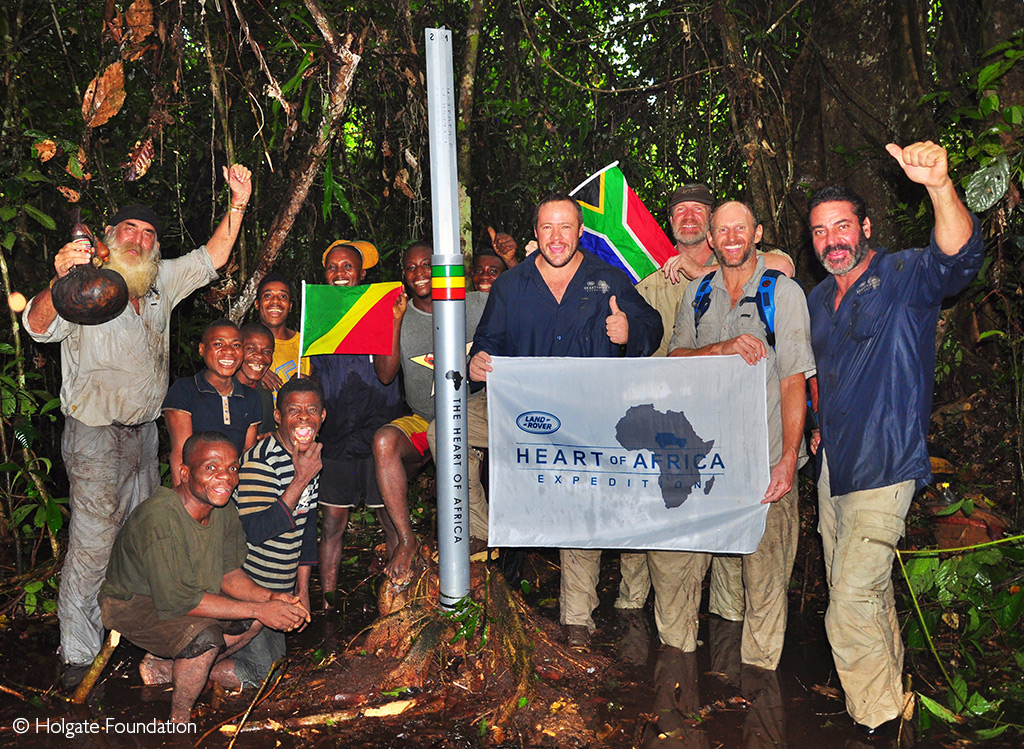
Then, with just 2km to go, our Ba’aka pygmy guides decided we’d bitten off more than we could chew and began turning back. It took considerable persuasion to convince them to continue, and in a daze of pain and exhaustion, we finally arrived at the GPS coordinates. The hands of the Ba’aka and the expedition team slowly screwed the Heart of Africa beacon into the roots of an ancient tree and, with lots of emotion, poured out the symbolic water carried from the Cradle of Humankind in South Africa. On the beacon was printed the flag of the Republic of Congo, the GPS coordinates, a small engraving of an elephant and the words, ’Geographic Heart of Africa – a tribute to Africa’s Elephants’.
We’re back in these beautiful, impenetrable rainforests nine years later. We wonder if the ‘Heart’ beacon is still where we placed it or whether it’s now been swallowed by the roots of the giant tree that became its home.
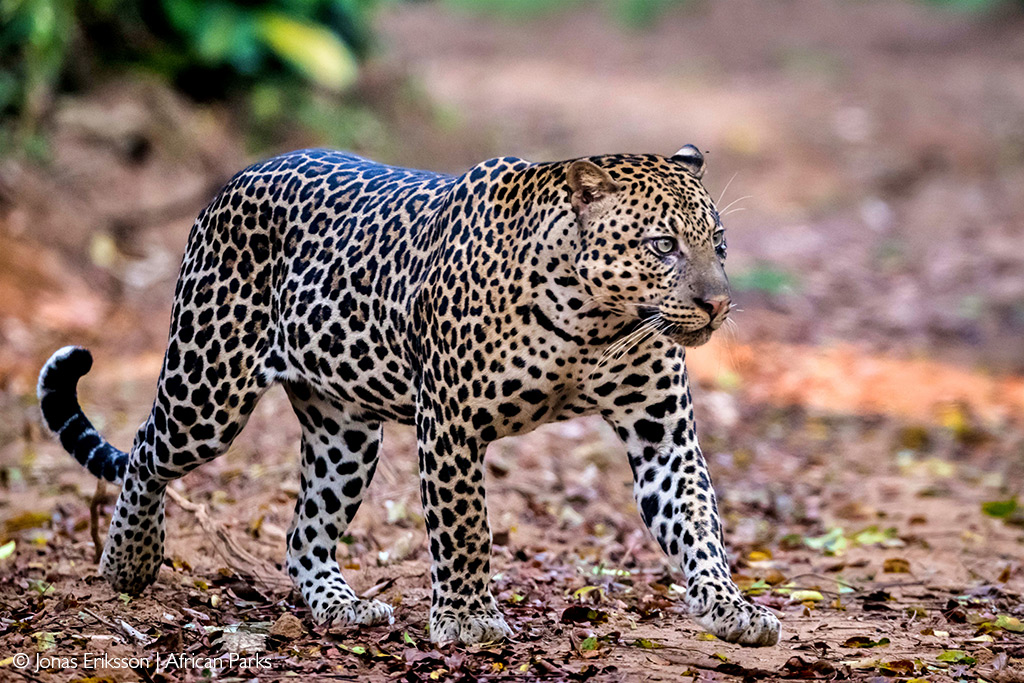

The rainforest wonderland of Odzala-Kokoua
Close to the border with Cameroon, we finally reach Parc National Odzala-Kokoua. It’s a great milestone – number 16 – of this conservation, community and cultural-themed expedition. Climbing wearily out of the mud-spattered Defenders, we’re instantly enveloped in clouds of butterflies – thousands of them like whirling, colourful confetti – and a cacophony of bird and monkey calls reverberate amongst the giant trees, assaulting our ears.
A rangy figure in mud-spattered jeans lopes towards us. It’s Jonas Eriksson, the very likeable park manager, who, along with his team, is responsible for Odzala-Kokoua, one of Africa’s oldest national parks designated in 1935. It spans a massive 13,546km2 of pristine rainforest in the Congo Basin and is recognised as one of the most botanically diverse areas in the world – on par with Uganda’s Bwindi Impenetrable National Park.
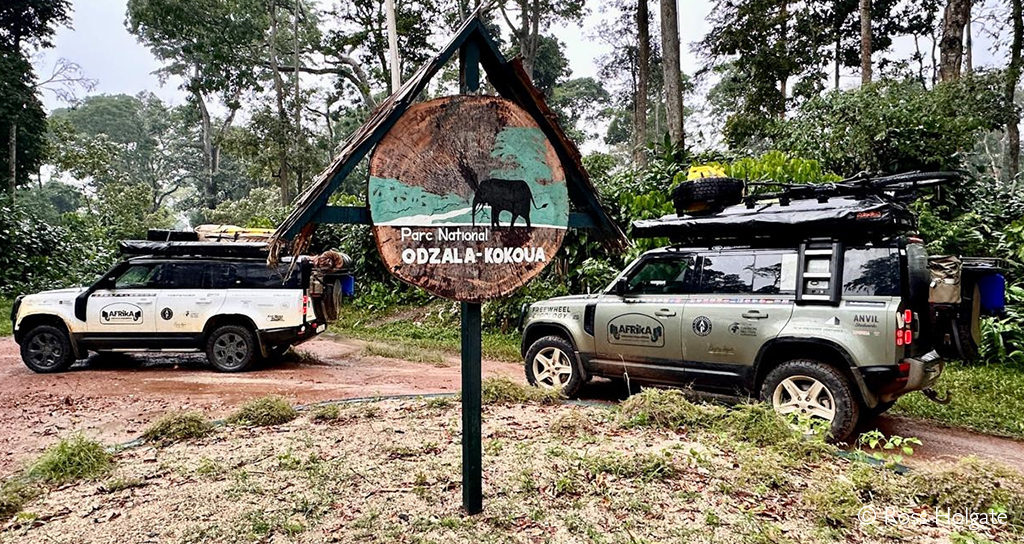
Ross’s godson Joshua Duffus and Jonas, knowing that we’d been living rough for weeks and that Fiona is just coming out of a bout of malaria, arrange a special surprise for us: a night of comfort at the beautiful Lango Lodge and even better, we have it all to ourselves. Fluffy towels, big mozzie net-covered beds with cotton-count sheets to die for, wooden decks overlooking the baï (forest clearing) for sundowners, and – can you believe it – Sanjay, the chef who we’d first met in St Tomé many years ago, is there to welcome us. In this isolated spot in the middle of the Congo rainforest, he serves up a sumptuous three-course meal, including a perfectly cooked rack of lamb! Early the following day, we’re greeted by the sight of huge herds of forest buffalo coming down to the baï to drink, reminiscent of scenes from a classic African safari. Unlike the Cape buffalo we know so well, the forest buffalo of the Congo basin are smaller, with swept-back horns to help them navigate the dense undergrowth. Their reddish-brown colouring is beautiful in the early light of dawn.
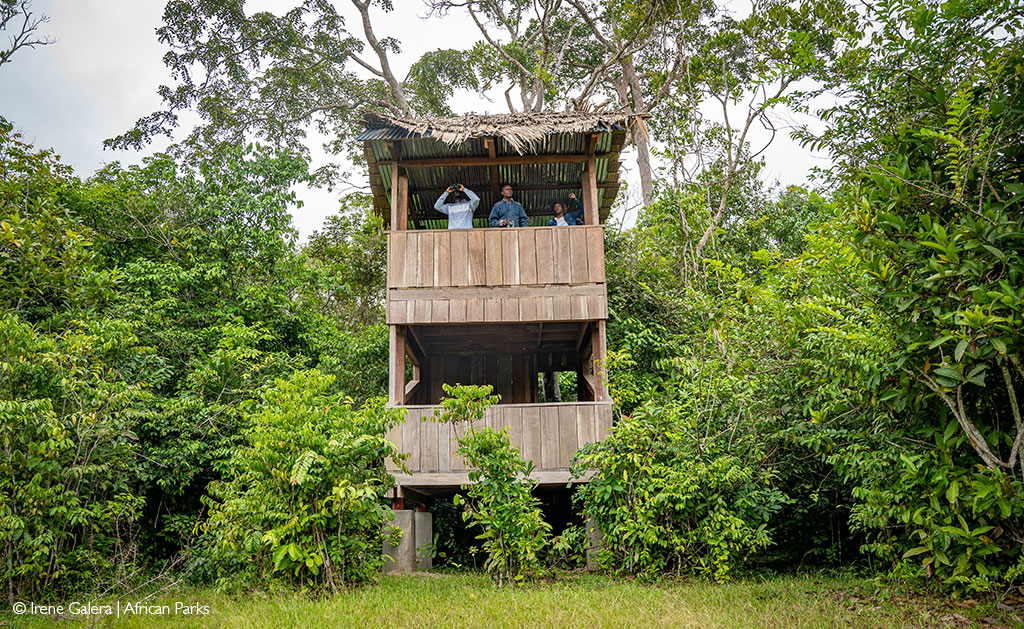
The travel fatigue is banished, and we’re eager to explore the park’s forests, swamps, and patchworks of savannah, which we’re told are home to around 100 mammal species. On a forest walk, we catch sight of a family of forest elephants feeding and rumbling contentedly in the dappled green light. Sometimes referred to as pygmy elephants, these critically endangered, smaller cousins of Africa’s savannah elephants only grow to around 2.5 metres at the shoulder – savannah elephants are almost 50% taller. But sadly, Josh tells us that ivory poachers highly prize their slender, straight tusks as they’re considered more valuable and better to carve into trinkets and ornaments for the Asian market.
But, as always on this Afrika Odyssey journey, there are stories of hope. Odzala-Kokoua protects the largest forest elephant population in Central Africa. Thanks to excellent African Parks management since partnering with the Congo-Brazzaville government in 2010, their numbers are stable and growing as new individuals take sanctuary in the park again.
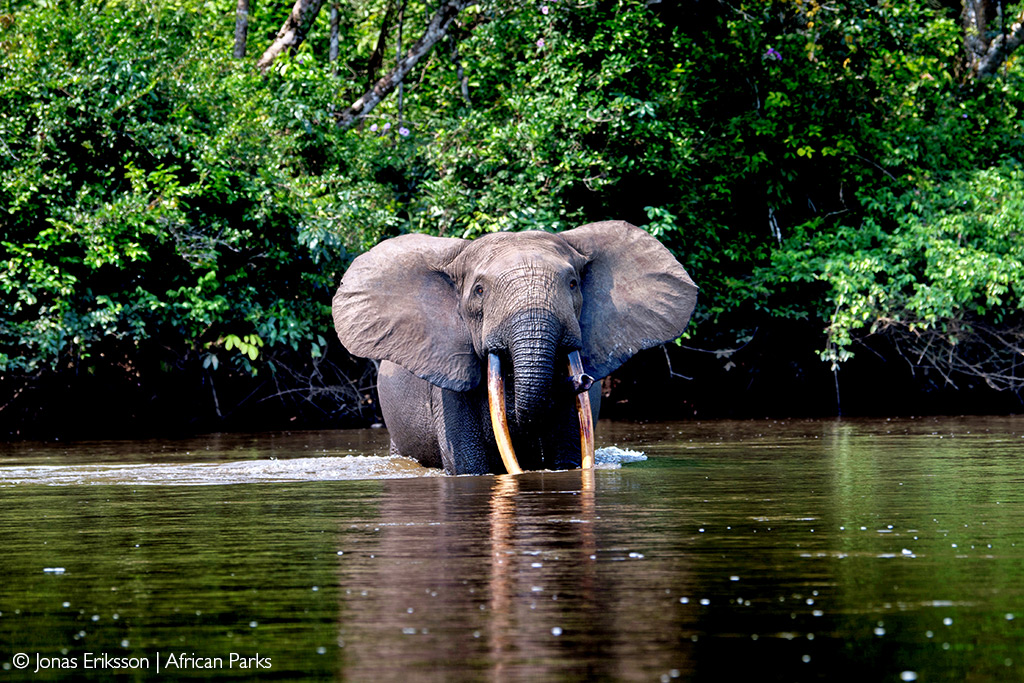
Returning to our simple expedition base camp – dusty tents and bedrolls, dented enamel plates and battered chairs around the campfire – it’s back to tuna pasta and braai meat bought in Brazzaville as Jonas shares his life story with us. He’s a true man of the forest, and with his Scandinavian roots, we nickname him the ‘Forest Viking’.
“I was just one-and-a-half years old when my Swedish missionary parents brought us to a remote mission station in the Congo – it was still Zaire in those days,” Jonas recalls. “Those were some of the best years of my life. We lived with a tribe called the Lolongo, and at a young age, I learned to speak perfect Lingala. My twin brother Micael and I hunted, fished and camped in the forest with our African friends – wild, carefree and full of adventure! It was a great occasion when, every few months, the riverboat would bring letters from home; my dad would read them aloud, and every night, our mum made us lie on our backs to show her the soles of our feet so that she could check for Jigger worms. When we were a little older, our parents realised that us two boys had ‘gone bush’, so they sent us to a small, very strict mission school of only about 50 kids, some 3,5 hours away by plane.”
 Want to visit Odzala-Kokoua National Park? Check out this epic safari to see lowland gorillas in Odzala-Kokoua. Or alternatively, design your dream safari with the help of our safari experts.
Want to visit Odzala-Kokoua National Park? Check out this epic safari to see lowland gorillas in Odzala-Kokoua. Or alternatively, design your dream safari with the help of our safari experts.
Then it was off to Stockholm University in Sweden where, quite naturally, Jonas studied biology and, in particular, the bonobo (pygmy chimpanzee) of which little was known. Once qualified, he was soon back in the Congo, where he took to living in the rainforests he loved while researching bonobos. “It was a tough life, and during the war years, my only means of transport to and from my study site was an ancient 1950s Swedish bicycle with a big back wheel hub with ball bearings, which I had to lubricate through a grease nipple. I only had a kit bag and small tent; it was a fascinating life and would take days of riding on my own and camping wild to get to HQ to hand in my reports.”


The Forest Viking and his rangers join in the expedition’s community work, starting with malaria prevention education and long-lasting mosquito nets for pregnant women and mums with children under five years of age – the ‘silent killer’ is rife here. The school kids love the educational Wildlife Art programme, and of course, there’s the expedition’s Rite to Sight work, which provides eye tests and reading glasses to the elderly. It’s a lot of fun and so worthwhile, and Jonas’s vast knowledge of local languages and cultures proves indispensable. We also learn that the park has initiated six successful income-generating projects alongside vegetable gardening and bee farming, and education, healthcare, infrastructure and apprenticeships support over 12,500 community residents every year.
Later back in the rainforest, Jonas explains that the narrow, single-plank walkway we’re on is better than a broader path, as the ellies step over it rather than on it. And so, ‘walking the plank’ one behind the other, with little forest elephant tracks visible in the mud alongside, we reach a small, crystal-clear stream. “This is where I pitched my tent and slept last night – it’s one of my favourite places,” says the Forest Viking with a grin as he adds rainforest water to the symbolic expedition calabash.
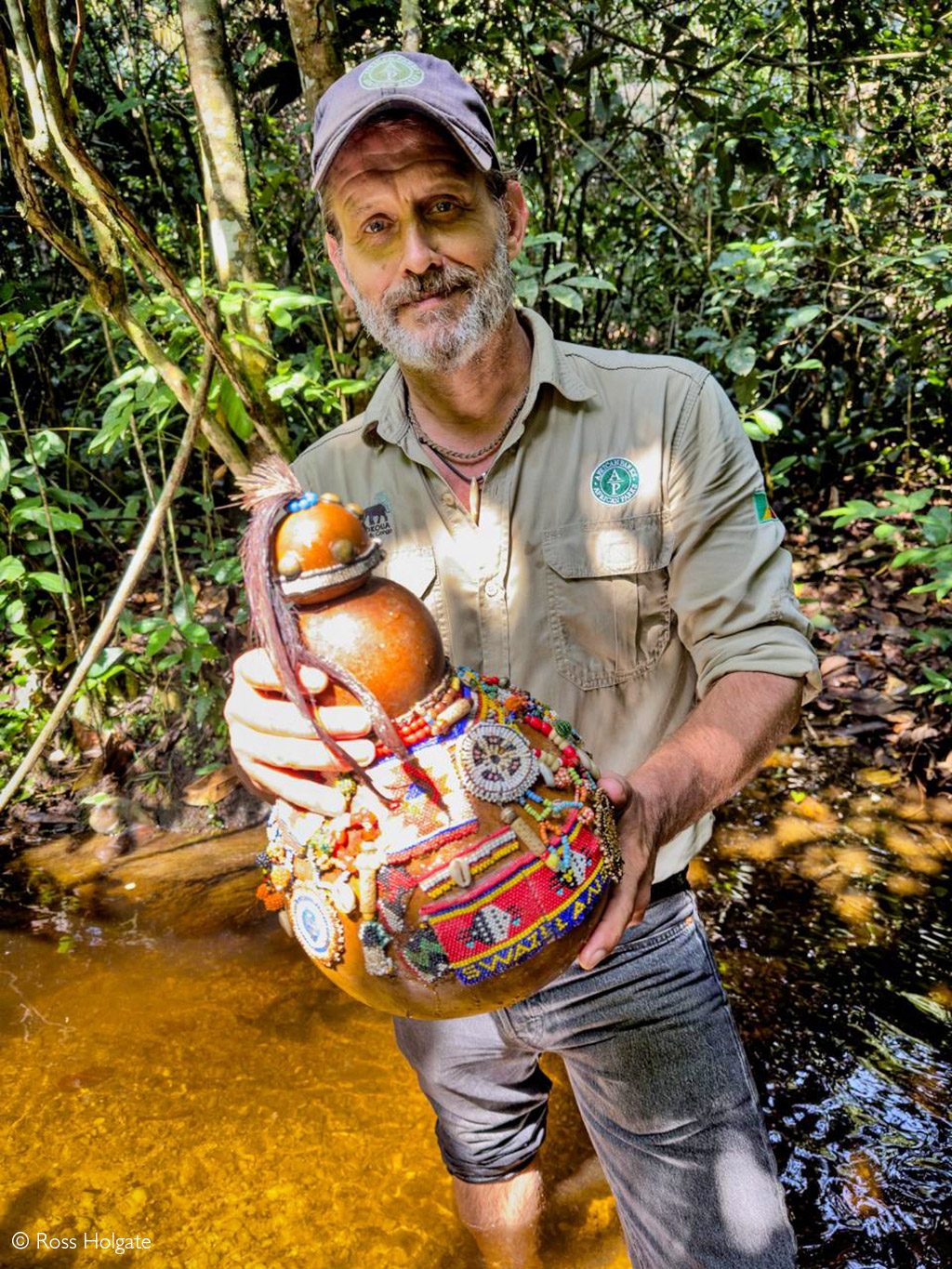
Just a short distance away in the Imbalanga Baï, we see what we’ve been hoping for – a young silverback western lowland gorilla. Odzala is home to around 7,500 of this critically endangered species, which is under severe threat from diseases such as Ebola as well as the illegal wildlife trade for pets and bushmeat. In 2020, the Congo government reaffirmed their partnership with African Parks and incorporated the Lossi Gorilla Sanctuary; more good news is the gorilla and chimpanzee populations have stabilised after the last Ebola outbreak and are now growing thanks to effective security and lots of community engagement. “They’re totally wild and unhabituated – that’s why adventurous travellers so love this place,” Jonas tells us. “That, plus the other wildlife – bongos, the tiny Bates pygmy antelope, giant forest hog, forest-adapted spotted hyena, golden cat, Guereza colobus and other primates, and of course the forest elephants, buffalo and other species. And twitchers love it too; over 440 bird species are found here.”
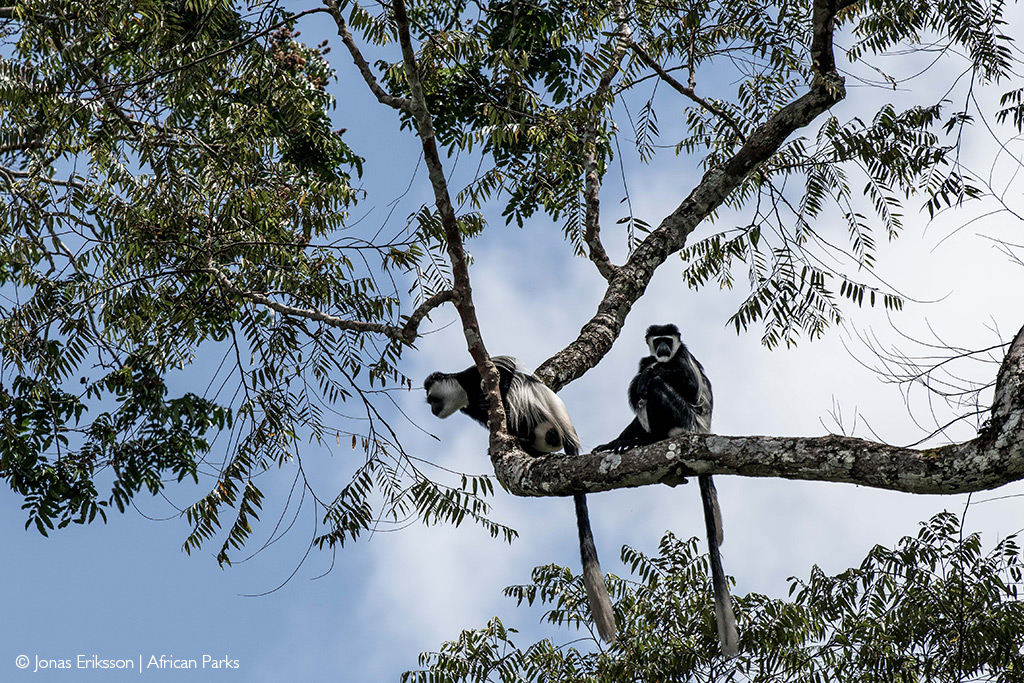
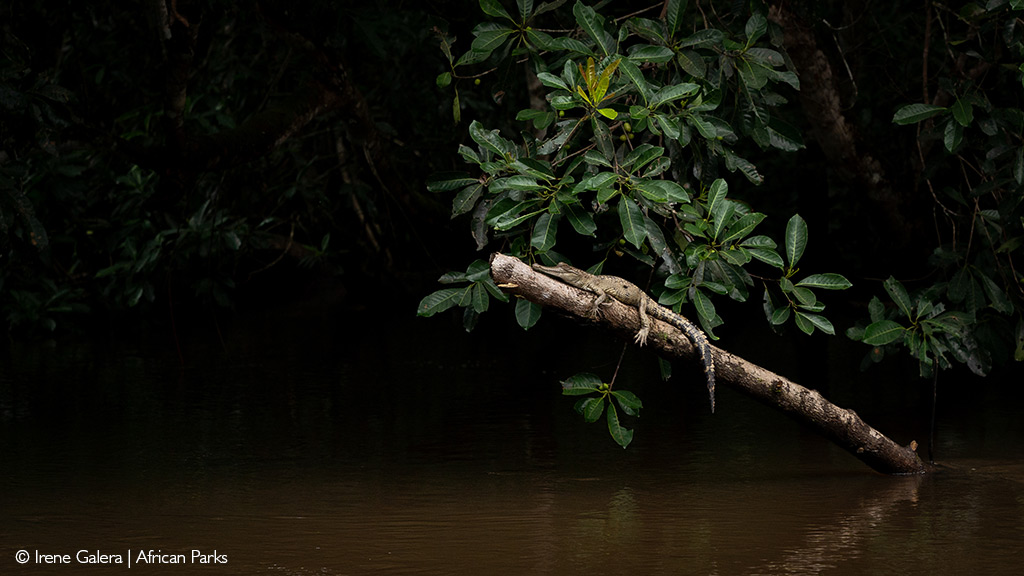
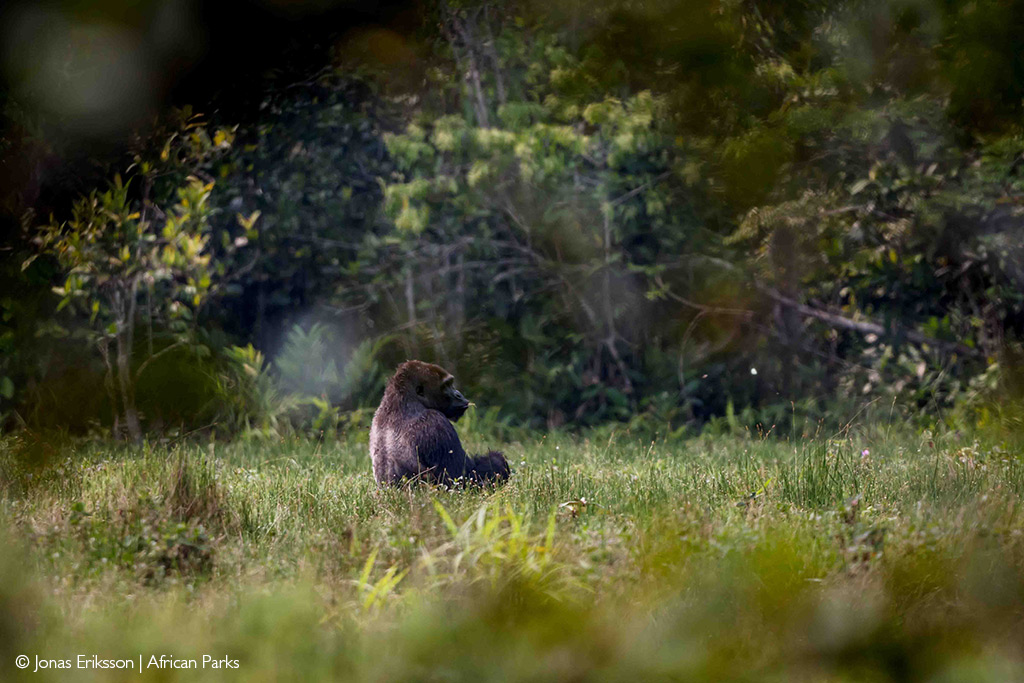
Walking through a shady canopy of giant trees, we reach Camp Imbalanga – the park’s ecotourism lodge – wonderfully intimate with just four safari tents and an elevated chilling area overlooking the forest. The super-friendly staff from nearby communities endorse the expedition’s Scroll for Conservation, as does South African Grant Leaity, who’s staying at the camp with his family. He writes: ‘What a surprise to visit this remote park and discover the phenomenal conservation and community development work, especially bringing communities into the programme’s centre, not only through training and employment but also by direct contributions to community projects. This is one of the cornerstones of Odzala’s success and gold dust in a remote location, where national development projects often don’t reach.’


We’d love to stay longer exploring the rainforest magnificence of Odzala-Kokoua but this Afrika Odyssey expedition needs to be forever on the move. Then we receive a message from Sheelagh; she’s recovering well from her near-fatal Parabuthus scorpion encounter and is itching to rejoin the expedition.
So, in the three Defenders, we continue north, cross the Sangha River on the logging ferry, and then travel by boat into the Central African Republic as Sheelagh flies in from South Africa. The Zen of Travel is on our side, and the moving parts all come together. We meet up at old friend Rod Cassidy’s Sangha Lodge. It’s excellent having Sheelagh back with the team – still a bit battered but all smiles again. It also allows us to spend more time with forest elephants at Dzangha Baï, one of their favourite haunts.
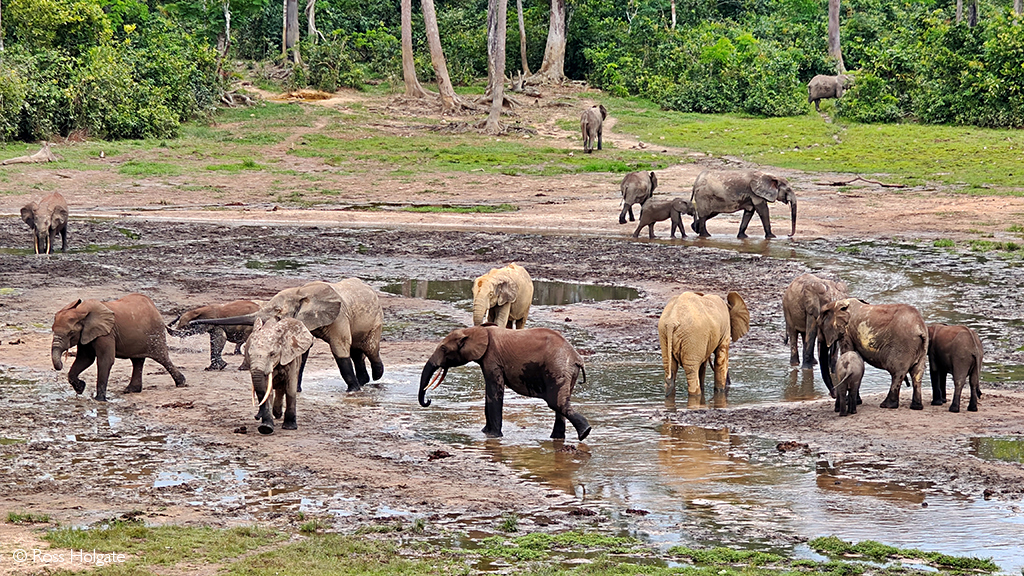
It’s a huge privilege and a magnificent experience to observe nearly 100 of these lovely creatures at close quarters; their hides are a kaleidoscope of colours from the multi-hued mud of the rainforest, ranging from chocolate brown to red, orange, pink and white. There’s lots of trumpeting and squeals, the calves play boisterous games of tag and we laugh at the comical sight of ellies on their elbows with bums in the air, burying their trunks deep in the watery pools to suck up vital minerals. But it wasn’t always such a peaceful scene; during the height of CAR’s civil war in 2013, 26 forest elephants were gunned down in Dzangha Baï in just two days by a heavily armed gang of poachers. Thankfully, those days are over.
Ahead lies a long push through Cameroon’s forests and northern badlands to reach Chad, where African Parks manages Zakouma National Park, Siniaka Minia Wildlife Reserve and Ennedi Natural and Cultural Reserve in the Sahara Desert. There’s a palpable mind shift in the expedition team; the going will be even tougher from now on, along unknown routes into the heat and volatility of North Africa.
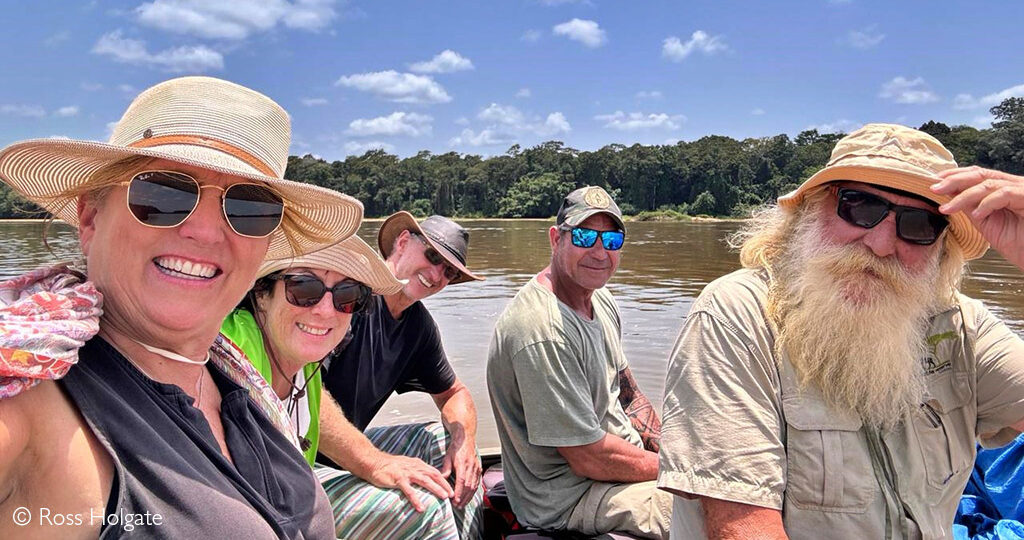
Further reading
- A sojourn in Odzala-Kokoua NP brings Simon Espley face to face with a paradise of forest elephants, western lowland gorillas & forest baïs. Read about Simon’s journey here.
- Odzala-Kokoua NP in Congo is one of Africa’s hidden gems – a testament to the resilience of both the continent’s people and her ecosystems. Read about the biodiversity bonanza that is Odzala-Kokoua here.
To comment on this story: Login (or sign up) to our app here - it's a troll-free safe place 🙂.![]()




